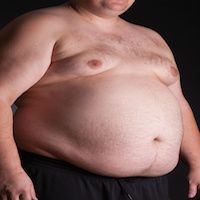Fat-Freezing Shrinks Enlarged Male Breasts
Men searching for breast reduction procedures should stick to fat freezing, or cryolipolysis – the safe and effective non-invasive alternative to fat reduction that doesn't damage surrounding tissue.

Men searching for breast reduction procedures should stick to fat freezing, or cryolipolysis — the safe and effective non-invasive alternative to fat reduction that doesn’t damage surrounding tissue.
According to recent data published in the September issue of Dermatology Surgery, the body contouring method has surged in popularity.
Members of the American Society of Dermatology Surgery (ASDS) performed 79,000 cryolipolysis treatments in 2014 alone.
Of the men who underwent cryolipolysis, 95% reported improved appearances and 89% noted feeling less embarrassed about their chests.
The stigma associated with enlarged breasts in males often makes male patients uncomfortable openly discussing their concerns, particularly surrounding alternative treatment methods. Standard treatment options have always included surgical incision under anesthesia, liposuction, or a combination of both.
The study published in Dermatologic Surgery involved 21 males with excess fat around their breasts who underwent two consecutive 60-minute fat-freezing treatments followed by another 60-minute treatment two months later.
The researchers used clinical photographs and ultrasound imaging to show the patients their significant reduction in breast contour and volume.
Study author Girish Munavalli, MD, MHS, concluded, “Results from this pilot study indicate that the non-invasive procedure is generally safe, with minimal t no downtime, and [the results are] sustained over one year from the first treatment. Moreover, it achieves appreciable results, enhanced by subject satisfaction and good treatment tolerance.”